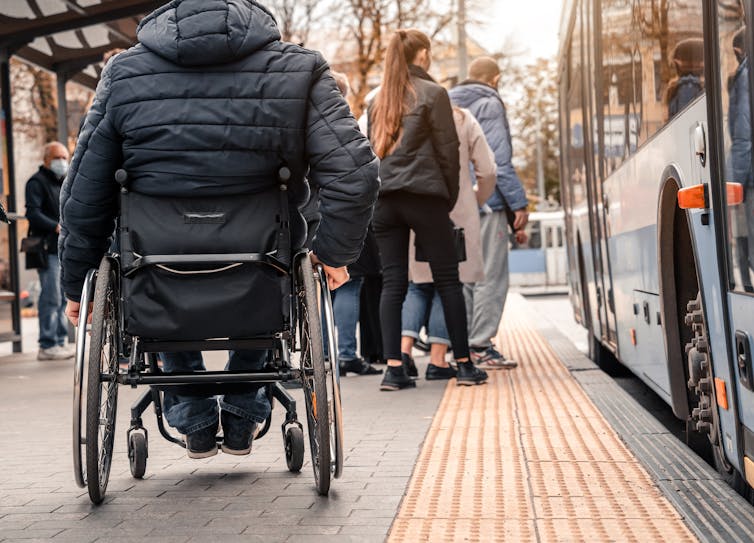
Despite the fact that people with disabilities are entitled to equality under the Canadian Charter of Rights and Freedoms and the provincial Human Rights Codes, they continue to face systemic barriers in accessing employment, education, transportation and housing.
Individuals with disabilities are under-represented in the Canadian labour market. Only 60 per cent of people with disabilities are employed in Canada, compared to 80 per cent of those without disabilities.
Studies also indicate that Canadians with more severe disabilities are more likely to work part-time than their able-bodied peers. Men with disabilities, for example, are three times more likely to work part-time than their able-bodied counterparts.
Working-age individuals with disabilities are also twice as likely to live in poverty compared to those without disabilities.
Recent initiatives like the Canada Disability Benefit Act and legislation like the Accessible Canada Act are important steps towards equality for people with disabilities, but more needs to be done to ensure they can flourish in the workplace.
‘Crip time’
One way to dramatically improve the lives of people with disabilities is by understanding time in a way that considers how people with disabilities experience barriers — something known as “crip time.”
It acknowledges the lived reality of people with disabilities and how they experience time in domains as diverse as transportation, employment and even recreation.
The concept of crip time, originally developed by scholars of disability studies such as Alison Kafer and Ellen Samuels, has the potential to help Canadians reimagine how we think about disability.
Consider Joanna, a fictional example. She is a quadriplegic who uses specialized door-to-door paratransit buses to get around and pre-booked attendant services to assist her with daily activities.
Someone like Joanna is likely to face frequent delays when commuting to work because paratransit often involves long wait times. In many cases, no paratransit bookings are available, forcing people with disabilities to use inaccessible transit systems.
Alternatives to paratransit, such as wheelchair-accessible taxis, are often unavailable or unaffordable for people with disabilities. The severe shortage of wheelchair-accessible taxis has only worsened over the past several years.

Joanna is also likely to face barriers when attendants are tardy or fail to show up at all. Even recreation programs that are accessible to wheelchair users may have waiting lists or require significant time to access.
Together, these barriers have the potential to significantly curtail Joanna’s ability to do her job. By understanding how these barriers affect people with disabilities — as well as other areas of daily living — crip time can guide policymakers and advocates towards more effective solutions.
Remote work
In a dramatic departure from pre-pandemic norms, a growing number of workplaces have embraced working from home in the wake of COVID-19. No longer stigmatized, remote work now offers a tool to level the playing field for people with disabilities.
In an ongoing study of working adults with disabilities, we found that many participants flourished when they were given the opportunity to work at home.
One participant shared:
“I have never been as productive and as happy, both personally and professionally, as when my work was 100 per cent remote.”
Another participant disclosed remote work as being beneficial to their personal health:
“I had more time to focus on my own self, my appointments and [my] mental health. So I feel remote work has been amazing for me.”
It’s clear that remote work has the potential to help people with disabilities excel professionally. In light of this, companies should be proactive in offering such workplace accommodations to employees.
More inclusive workplaces
We need to reconsider how workplaces view productivity. Creating flexible workplaces that allow people to work part-time and/or from home is a more inclusive approach.
By creating more inclusive workplaces, companies can harness the talent of individuals who might otherwise be excluded from the workplace. Companies miss out on talent opportunities when they don’t hire people with disabilities.
Flexible workplaces could also benefit people without disabilities, such as single parents and students who are only able to work part-time. With appropriate support from governments and employers to ensure part-time workers receive adequate benefits, the potential of crip time as a policy tool is profound.
Although our study is still ongoing, we’re hopeful our preliminary findings will change how we think about the role time plays in the lives of people with disabilities.
By understanding and addressing the ways people with disabilities experience time differently than able-bodied people in their everyday lives, we can build more inclusive — and productive — workplaces for all of us.
Ravi Malhotra receives funding from SSHRC.
Julia Dobrowolski does not work for, consult, own shares in or receive funding from any company or organisation that would benefit from this article, and has disclosed no relevant affiliations beyond their academic appointment.
This article was originally published on The Conversation. Read the original article.







